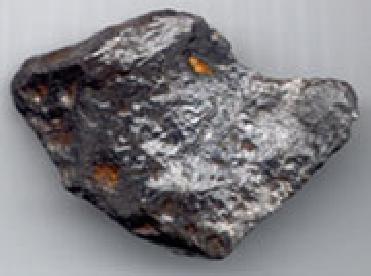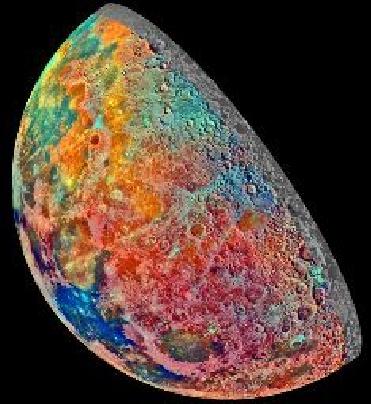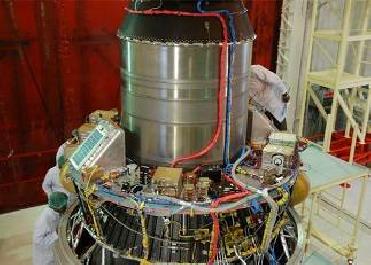
When a particle or chunk of metallic or stony matter called a Meteoroid enters the earth's atmosphere from outer space, air friction heats the meteoroid so that it glows and creates a shining trail of gases and melted meteoroid particles. Most meteoroids disintegrate before reaching the Earth. Meteoroids that reach the earth are called Meteorites.
Meteorites have traditionally been divided into three broad categories: Stony, Iron, and Stony-iron.
Stony meteorites: They consist of minerals rich in silicon and oxygen, with smaller amounts of iron, magnesium, and other elements. One group of stony meteorites, called chondrites are pieces of the same material from which the planets formed.
Another group of stony meteorites, the achondrites, were once part of a parent body, such as an asteroid, that was large enough to have melted and separated into an iron-rich core and a stony crust. Achondrites come from the outer crust; stony-iron meteorites, from the inner crust; and iron meteorites, from the metallic core. The most common meteorites are chondrites, which are stony meteorites.
Iron meteorites: They consist mostly of iron and nickel.
Stony-iron meteorites: They have nearly equal amounts of silicon-based stone and iron-nickel metal.
The size of meteorites varies greatly. Most of them are relatively small. The largest meteorite ever found weighs about 66 short tons (60 metric tons). It fell at Hoba West, a farm near Grootfontein, Namibia. However, much larger bodies, such as asteroids and comets, can also strike the earth and become meteorites.
Meteorites reach the earth's surface because they are the right size to travel through the atmosphere. If they are too small, they will disintegrate in the atmosphere. If they are too large, they may explode before reaching the earth's surface. One such object exploded about 6 miles (10 kilometers) above the Tunguska River in Siberia in 1908, leaving a 20-mile (32-kilometer) area of felled and scorched trees.
Thousands of small meteorites have been found in Antarctica, providing a rich supply of specimens for scientists to study. Scientists study meteorites for clues to the types of material that formed the planets.
Notable meteorites
The Allende meteorite is the largest carbonaceous chondrite ever found on Earth. The fireball was witnessed at 1:05 a.m. on February 8, 1969, falling over the Mexican state of Chihuahua.
Hoba is a meteorite that lies on the farm "Hoba West", in the Otjozondjupa Region of Namibia. It has been uncovered but, because of its large mass, has never been moved from where it fell. The main mass is estimated at over 60 tons, and it is the largest known meteorite (as a single piece) and the most massive naturally-occurring piece of iron known at the Earth's surface.
Courtesy:- NASA
 Previous Article
Previous Article Next Article
Next Article













The Indian Air Force, in its flight trials evaluation report submitted before the Defence Ministry l..
view articleAn insight into the Medium Multi-Role Combat Aircraft competition...
view articleSky enthusiasts can now spot the International Space Station (ISS) commanded by Indian-American astr..
view article